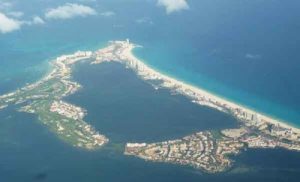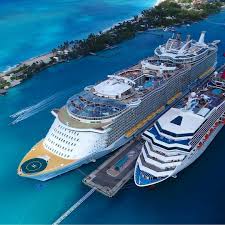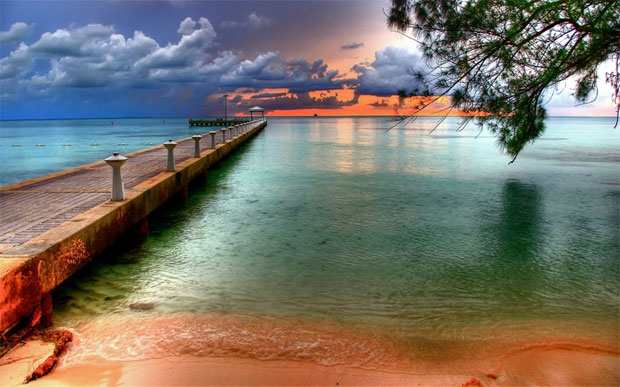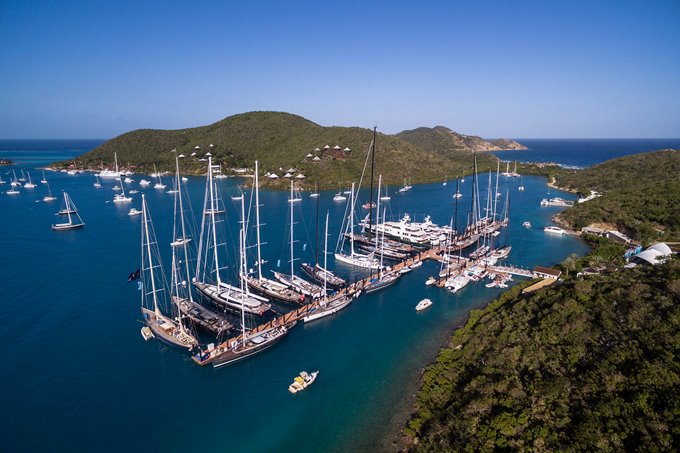LOVELY FACTS
 The Caribbean has long been recognized as one of the most dangerous for navigation. Tropical hurricanes, often “visiting” this region, bring with them many troubles. For example, Hurricane Gilbert (Spanish el Huracán Gilbert), which swept in 1988 at a speed of 320 km / h, left a strip of catastrophic destruction 4 km wide. and killed about 400 people. In 2004, Hurricane Jenny (Spanish el Huracán Jenny) killed 1,314 people in Haiti.
The Caribbean has long been recognized as one of the most dangerous for navigation. Tropical hurricanes, often “visiting” this region, bring with them many troubles. For example, Hurricane Gilbert (Spanish el Huracán Gilbert), which swept in 1988 at a speed of 320 km / h, left a strip of catastrophic destruction 4 km wide. and killed about 400 people. In 2004, Hurricane Jenny (Spanish el Huracán Jenny) killed 1,314 people in Haiti.
The Caribbean is a seismic zone. According to the observations of scientists, the Caribbean lithosphere plate is annually shifted east by almost 20 mm.
Due to the movements of the earth’s crust, the collision of the North American and Caribbean lithospheric plates became one of the most catastrophic earthquakes of recent years: on January 12, 2010, Port-au-Prince (French Port-au-Prince), the main port, was practically destroyed. and the capital of the Republic of Haiti. The death toll from the terrible earthquake amounted to more than 200 thousand people, more than 300 thousand people were injured.
Port Royal (imp. Port Royale), the famous “pirate” city in Jamaica, was also the victim of a ruthless disaster: an earthquake that occurred on June 7, 1692, most of the city was almost collapsed into the sea. Now the remains of the “pirate capital” has become a popular tourist attraction and a place of archaeological research.
The “Caribbean Paradise” region of the Caribbean can only be called conditionally: the unearthly beauty here is adjacent to the constant danger of destructive rampant elements. Uncontrolled human activity has also caused significant damage to the beauty and environmental well-being of these places.
In the Caribbean, less than 15% of the rainforests today are preserved. The negative “contribution” of shipping is estimated at 82 thousand tons of garbage discharged into sea waters per year.
Very sensitive to negative changes in the environment are corals. Over the past 50 years, the coral “buildings” of the Caribbean have lost almost 80% of their coverage due to the “white plague” – a coral disease in which white spots first appear on them and then the corals die. The main reason for the disappearance of coral, scientists call the harmful effects of global warming and human pollution of the sea.
The first documented contact of Europeans with America took place on October 13, 1492, on that day Columbus landed on an island called him “San Salvador” (today’s Watling Island (Spanish Watling) of the Bahamas archipelago).
The scattering of islands in the Caribbean became a field of vigorous activity of the European colonialists. As the indigenous Indian population was rapidly dying from excessive slave labor, the conquistadors began to import African slaves here.
On the Yucatan Peninsula of the Caribbean coast, in Mexico, the Yucatan Peninsula is located Tulum (Spanish Tulum) – the city of the ancient Mayan civilization, founded in 1200 and fell into decay by the XVI century. Today, Tulum is the pearl of the famous Mayan Riviera, a resort area on the east coast of Yucatan.
Today, the population of the Caribbean is a fantastic mix of races, nationalities, cultures, languages, traditions and customs.
Legends and legends about Caribbean pirates and the countless treasures hidden by them occupy a central place in the folklore of the peoples of the West Indies. Special firms and solo seekers often find ships that have sunk in antiquity, and someone is lucky enough to pick up the treasures found from the bottom of the sea.
Tourism has become one of the pillars of the economy of the Caribbean, which is not surprising. Awesome natural disasters are not able to turn tourists away from the desire to enjoy the beauties of the Caribbean nature and historical attractions, to see first-hand fabulous beaches and feel like romantic adventurers.
Numerous sharks of the Caribbean Sea are represented by gray sharks (including reef, bull, silk) and various bottom species (nannies, six-gill, squat, etc.). Tiger and even white sharks, which are very rare, are also found in coastal waters. In open waters of the sea, one can find hammerhead, blue, whale and long-fin sharks. By the way, the largest of the sharks – the whale never attacks humans, it feeds on plankton and small fish, filtering water through thousands of sharp, small teeth. The most dangerous for humans is a white shark, reaching up to 6 m in length: it has an aggressive disposition, high attack speed and a silent appearance. Fortunately, it rarely floats in the Caribbean.
The high population density of the Caribbean region, the abundance of vacationers and fans of water sports, and, undoubtedly, the large number of sharks – as a result of all this, there are often cases of dangerous collisions between sharks and humans in the sea (there are even cases of death of swimmers).




